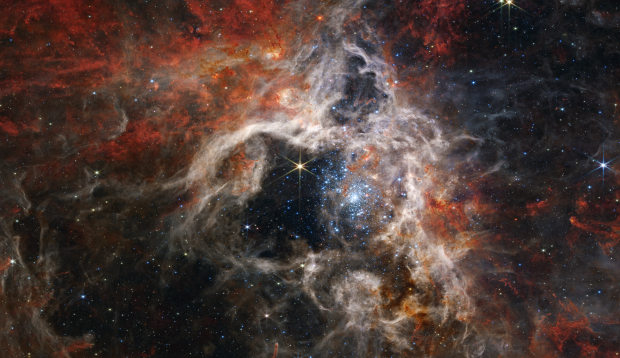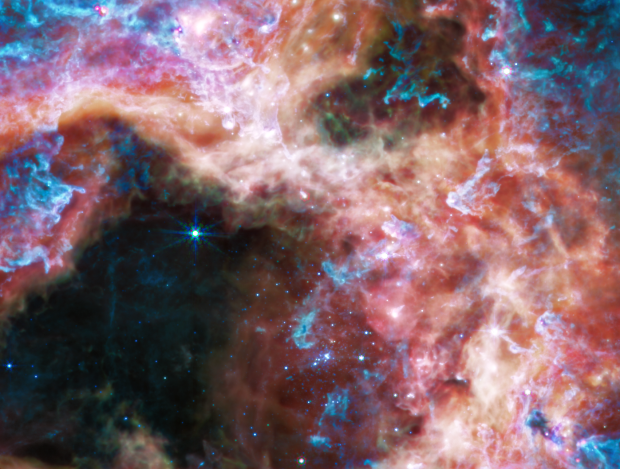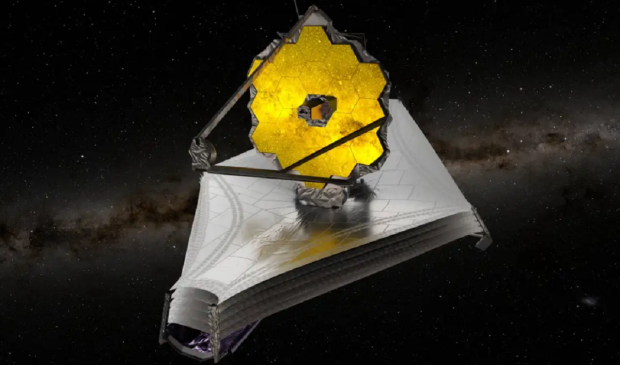NASA's now-famous James Webb Space Telescope (JWST) has pointed its high-tech instruments at a cosmic tarantula.
NASA has taken to its blog to reveal an incredible mosaic image of the stellar nursery called 30 Doradus, which is located "only" 161,000 light-years away from Earth in the Large Magellanic Cloud galaxy. Astronomers have nicknamed 30 Doradus the "Tarantula Nebula" for its wispy and dusty filaments, along with its structure and composition of gas and dust.
NASA explains that the Tarantula Nebula is the brightest star-forming region in the Local Group, which the group of galaxies closest to our Milky Way galaxy. Astronomers have used Webb's infrared instruments to observe the Tarantula Nebula and discovered tens of thousands of never-before-seen young stars that were previously obscured from astronomers' view by cosmic dust. The above image showcases a large cluster of massive young blue stars in the center, which are causing the center of the nebula to be hollowed out by their "blistering radiation".

"One of the reasons the Tarantula Nebula is interesting to astronomers is that the nebula has a similar type of chemical composition as the gigantic star-forming regions observed at the universe's "cosmic noon," when the cosmos was only a few billion years old and star formation was at its peak. Star-forming regions in our Milky Way galaxy are not producing stars at the same furious rate as the Tarantula Nebula, and have a different chemical composition.

This makes the Tarantula the closest (i.e., easiest to see in detail) example of what was happening in the universe as it reached its brilliant high noon. Webb will provide astronomers the opportunity to compare and contrast observations of star formation in the Tarantula Nebula with the telescope's deep observations of distant galaxies from the actual era of cosmic noon," writes NASA.



